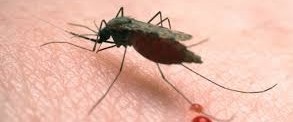Hamusse SD, Demissie M, Lindtjorn B. Trends in TB case notification over fifteen years: the case notification of 25 Districts of Arsi Zone of Oromia Regional State, Central Ethiopia. BMC public health 2014; 14(1): 304.
Background The aims of tuberculosis (TB) control programme are to detect TB cases and treat them to disrupt transmission, decrease mortality and avert the emergence of drug resistance. In 1992, DOTS strategy was started in Arsi zone and since 1997 it has been fully implemented. However, its impact has not been assessed. The aim of this study was, to analyze the trends in TB case notification and make a comparison among the 25 districts of the zone.
Methods A total of 41,965 TB patients registered for treatment in the study area between 1997 and 2011 were included in the study. Data on demographic characteristics, treatment unit, year of treatment and disease category were collected for each patient from the TB Unit Registers.
Results The trends in all forms of TB and smear positive pulmonary TB (PTB+) case notification increased from 14.3 to 150 per 100,000 population, with an increment of 90.4% in fifteen years. Similarly, PTB+ case notification increased from 6.9 to 63 per 100,000 population, an increment of 89% in fifteen years. The fifteen-year average TB case notification of all forms varied from 60.2 to 636 (95% CI: 97 to 127, P<0.001) and PTB+ from 10.9 to 163 per 100,000 population (95% CI: 39 to 71, p<0.001) in the 25 districts of the zone. Rural residence (AOR, 0.23; 95% CI: 0.21 to 0.26) and districts with population ratio to DOTS sites of more than 25,000 population (AOR, 0.40; 95% CI: 0.35 to 0.46) were associated with low TB case notification. TB case notifications were significantly more common among 15-24 years of age (AOR, 1.19; 95% CI:1.03 to 1.38), PTB- (AOR, 1.46; 95% CI: 1.33 to 64) and EPTB (AOR, 1.49; 95% CI; 1.33 to 1.60) TB cases.
Conclusions The introduction and expansion of DOTS in Arsi zone has improved the overall TB case notification. However, there is inequality in TB case notification across 25 districts of the zone. Further research is, recommended on the prevalence, incidence of TB and TB treatment outcome to see the differences in TB distribution and performance of DOTS in treatment outcomes among the districts.
